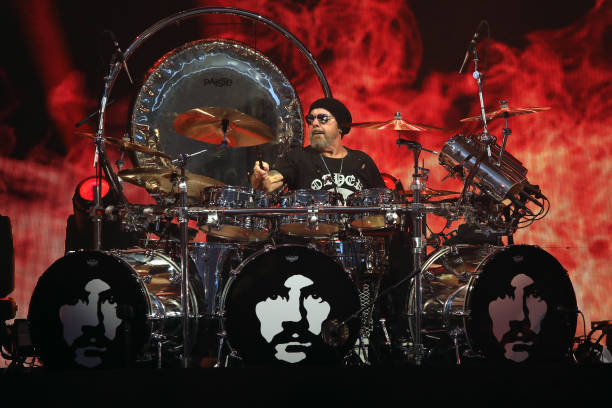Under the quiet hush of the Vail mountains, something thunderous stirred on August 7. Jason Bonham stepped onto the stage at the Gerald R. Ford Amphitheater, not as a mere performer, but as a keeper of legacy. With his band, he paid tribute to Physical Graffiti: the landmark double album that, fifty years ago, became one of Led Zeppelin’s most expansive and ambitious works.

The performance was part of a larger journey: a 22-city tour celebrating the album’s half-century mark. For Bonham, this wasn’t just a nostalgic trip through a classic record. It was a personal offering. Physical Graffiti had always held a special place in his heart, not only for its musical richness, but for what it represented. He had spoken of his hope to bring at least 50 of these shows to life, letting fans reconnect with the record in its full form.
Onstage, Jason Bonham and his band played the entire album from start to finish. “Kashmir” rang out with cinematic force. “In My Time of Dying” cut deep. Rarely performed tracks like “Boogie With Stu” added unexpected delight. But this wasn’t about mimicry. Each song carried a weight of memory and lived experience, shaped by Bonham’s own evolution as a musician and as a man.
Following the album set, the evening stretched beyond Physical Graffiti into the wider Zeppelin catalogue. “Whole Lotta Love,” “The Ocean,” “Stairway to Heaven”: each one greeted with the kind of reverence that only time can bring. The crowd, surrounded by mountains and summer air, sang along not just from memory, but from something deeper: a feeling of return.
Bonham didn’t shy away from the personal. He recalled his struggles with addiction, how they threatened to pull him away from everything he loved. Becoming sober, he said, brought him back to music with clarity. It also allowed him to step into his father’s shadow without being lost in it. During the show, he even played alongside projected footage of his father, the late John Bonham, creating a moment that felt both tender and monumental.
What unfolded in Vail was more than a concert. It was a story retold through rhythm. A son honoring his father. A musician honoring a band. And an audience honoring a record that, even after five decades, still roars with life.
There were no gimmicks, no forced spectacle. Just raw sound, honest playing, and a night that felt like both a reunion and a resurrection. Physical Graffiti lived again, not in the past, but right there, in the heartbeat of the present.
